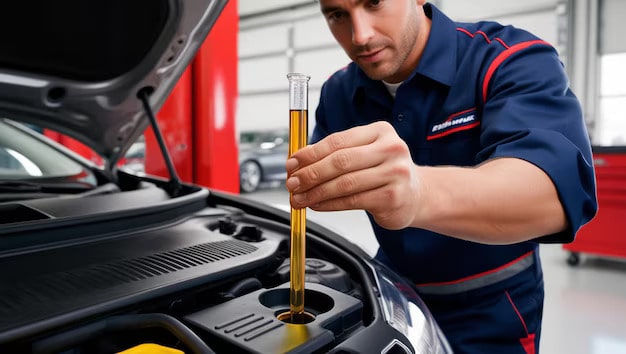When you get behind the wheel, your vehicle’s dashboard is your command center — a vital source of information about your car’s health and performance. Among the most important indicators are your vehicle’s warning lights. These dashboard indicators are designed to alert you when something needs your attention, whether it’s a minor maintenance reminder or a serious mechanical issue.
Understanding what these lights mean can be the difference between avoiding costly repairs and driving into trouble. Yet, many drivers feel unsure or even anxious when they see a warning light illuminate. This guide will help demystify those dashboard indicators, explaining what the most common vehicle warning lights mean and how you should respond.
Why Are Vehicle Warning Lights Important?
Vehicle warning lights are part of your car’s onboard diagnostic system. Modern vehicles are equipped with dozens of sensors that continuously monitor engine performance, safety systems, emissions, and more. When the system detects something outside the normal range, it triggers a warning light on your dashboard to get your attention.
Ignoring these warnings can lead to serious damage or compromise your safety. Conversely, reacting appropriately can help you address issues early, maintain your vehicle’s reliability, and avoid expensive repairs.
The Most Common Vehicle Warning Lights and What They Mean
Here’s a rundown of the most frequent dashboard indicators you’ll encounter, along with straightforward advice on what to do if you see them:
1. Check Engine Light (Malfunction Indicator Lamp)
This is probably the most well-known dashboard light. It can illuminate for many reasons—from a loose gas cap to issues with your catalytic converter or oxygen sensors. If the check engine light comes on steady, it means your car’s computer has detected a problem. A flashing check engine light signals a more urgent issue that requires immediate attention.
What to do: If the light is steady, schedule a diagnostic check soon. If flashing, safely pull over and turn off the engine to avoid further damage. Have your vehicle inspected immediately.
2. Oil Pressure Warning Light
This light looks like an old-fashioned oil can and indicates your engine oil pressure is too low. Oil pressure is critical to lubricate engine parts and prevent damage.
What to do: Stop driving immediately if this light comes on. Check your oil level and add oil if needed. If the light remains on after adding oil, do not continue driving—call for professional assistance right away.

3. Battery/Charging System Light
Usually represented by a battery icon, this light means your battery isn’t charging properly. It could be a dead battery, a failing alternator, or an electrical issue.
What to do: Turn off any non-essential electrical devices and head to a repair shop as soon as possible. If your car stalls, the battery may be drained.
4. Brake System Warning Light
This red exclamation mark or the word “BRAKE” warns of a potential issue with the braking system, such as low brake fluid, worn brake pads, or a more serious hydraulic failure.
What to do: If this light comes on, check your parking brake first to ensure it’s fully released. If it’s off, have your brakes inspected immediately for your safety.
5. Tire Pressure Monitoring System (TPMS) Light
This icon looks like a flat tire with an exclamation mark. It alerts you that one or more tires are underinflated, which can affect handling, fuel economy, and tire lifespan.
What to do: Stop at a safe place and check your tire pressure with a gauge. Inflate tires to the recommended pressure found in your owner’s manual or driver’s door frame.
6. Engine Temperature Warning Light
Often a thermometer or thermometer in liquid symbol, this light indicates your engine is overheating, which can cause severe engine damage.
What to do: Pull over safely and turn off the engine. Let it cool before checking coolant levels. Avoid opening the radiator cap while hot. Call for professional help if the problem persists.
7. ABS (Anti-lock Braking System) Warning Light
This light signals a problem with the anti-lock brake system, which helps maintain steering control during hard braking.
What to do: Your regular brakes will still work, but ABS might not activate when needed. Get your braking system checked as soon as possible.
How to Respond to Warning Lights: Practical Tips
Knowing what each warning light means is helpful, but knowing how to respond is equally important.
- Don’t Panic: Warning lights are meant to inform you, not frighten you. Assess the situation calmly.
- Check Your Owner’s Manual: Every car is different. Your manual will provide specific information about dashboard indicators and recommended steps.
- Schedule Diagnostics Promptly: For most lights that don’t require immediate stopping, don’t delay a visit to your trusted mechanic.
- Keep Routine Maintenance Up to Date: Many warning lights are triggered by avoidable issues. Regular oil changes, fluid checks, tire inspections, and system diagnostics can prevent warnings from appearing.
- Know When to Stop Driving: Lights related to oil pressure, engine temperature, or flashing check engine alerts usually require immediate action to prevent damage.
Why Professional Diagnostics Matter
At Mike’s Automotive in Pawling, we understand how confusing and stressful dashboard warning lights can be. With over 25 years of experience and dealership-level expertise, we use advanced diagnostic tools to quickly pinpoint the root cause behind those warning lights. This approach saves you time, prevents unnecessary repairs, and gets you safely back on the road.
When your check engine light or any other warning indicator turns on, trust our team to provide clear explanations, honest estimates, and expert repairs. From routine maintenance to complex engine diagnostics and repairs, we bring a personal touch combined with professional precision.

Staying Ahead of Vehicle Issues
Ignoring dashboard warning lights can lead to inconvenient breakdowns or costly repairs. But you don’t have to be a car expert to keep your vehicle in top shape. Pay attention to your dashboard, listen to your car, and don’t hesitate to reach out for expert help.
Whether it’s a simple tire pressure fix or an urgent engine concern, Mike’s Automotive is here to guide you every step of the way. We’re proud to serve Pawling and the surrounding communities with trustworthy service and a commitment to your safety.
Next time a warning light comes on, remember it’s your vehicle’s way of talking to you. Listen closely, act wisely, and drive confidently.
If your vehicle’s warning lights are on or if you want peace of mind with a thorough checkup, give Mike’s Automotive a call today. Let our expert team ensure your car stays safe, reliable, and ready for the road ahead.
